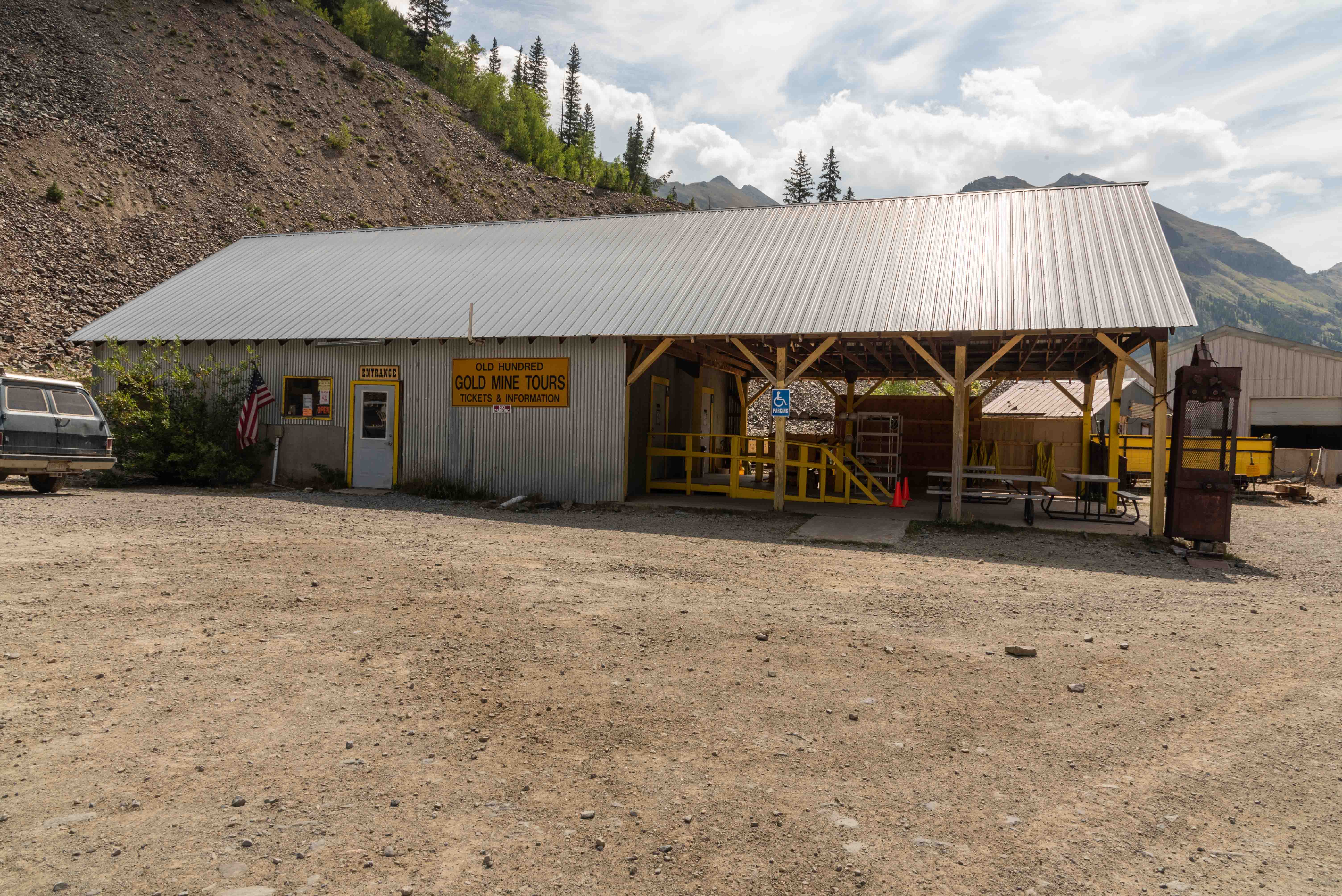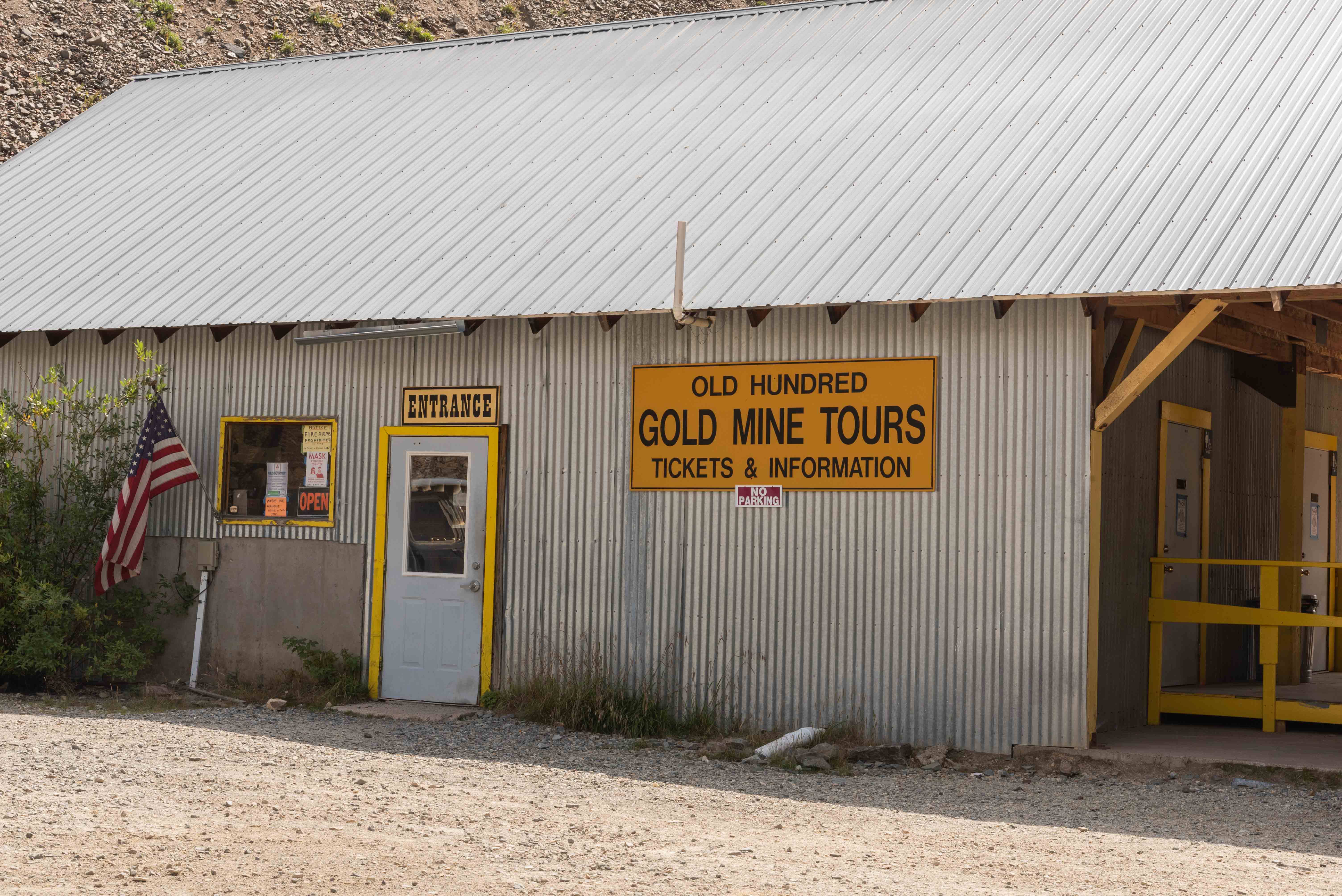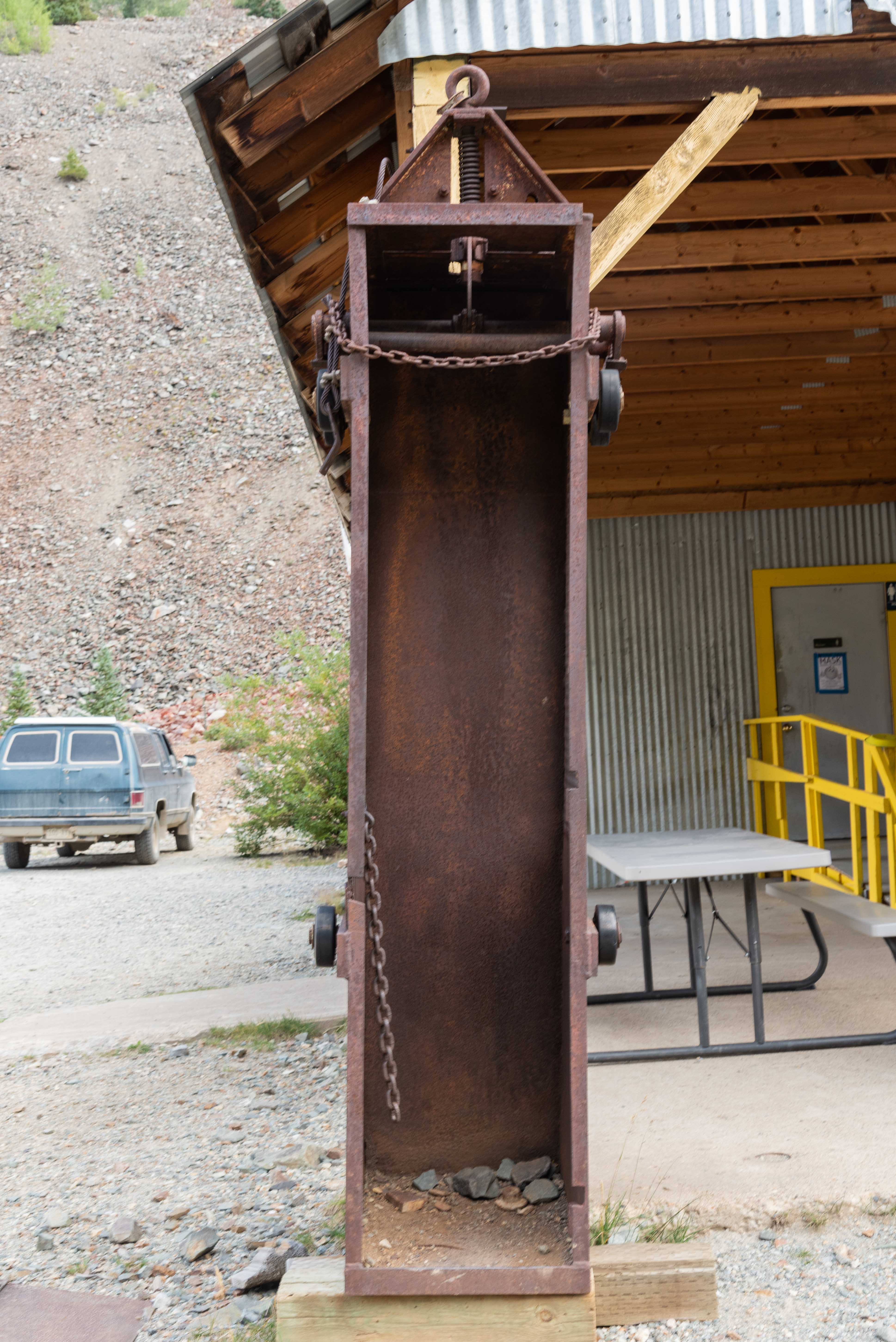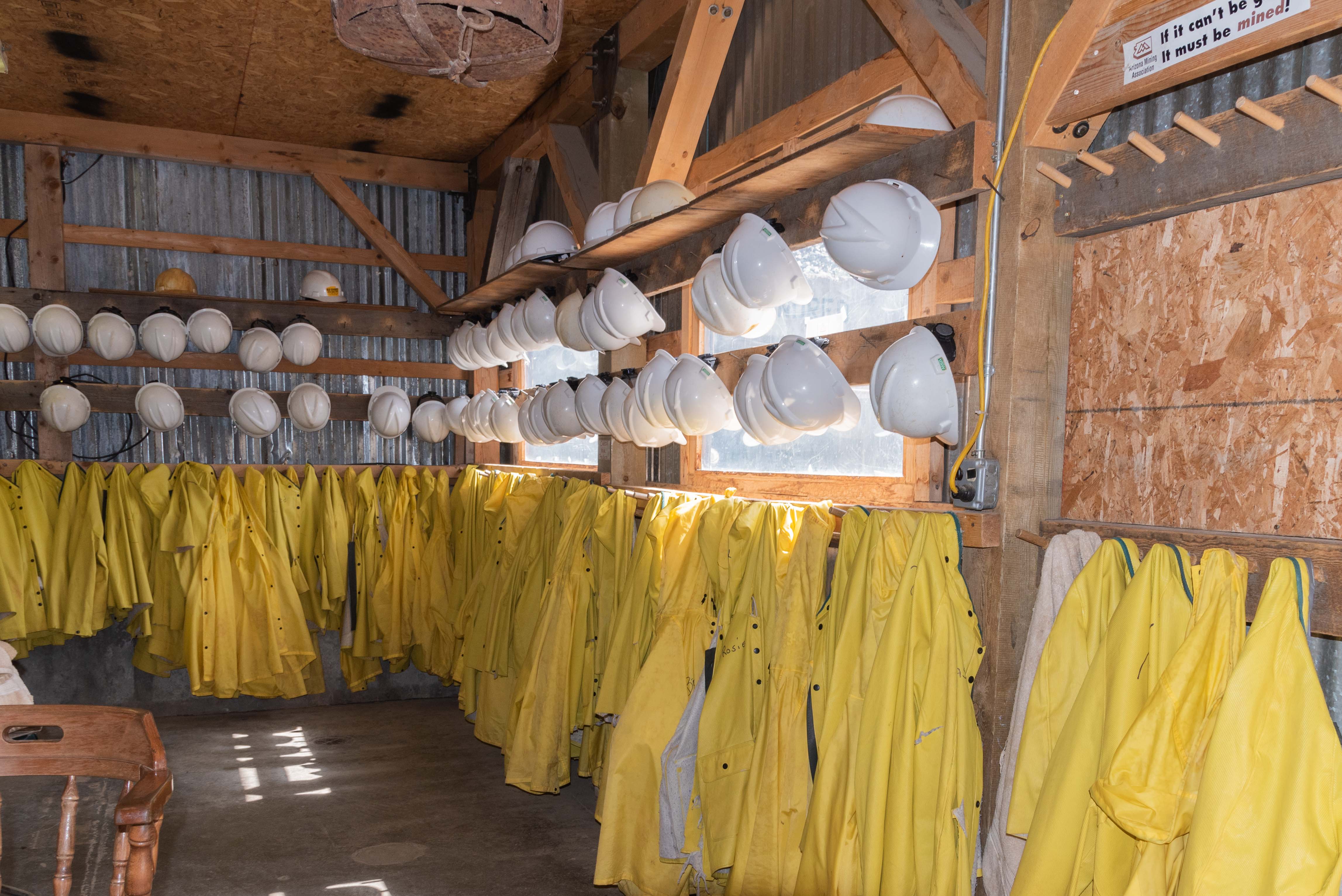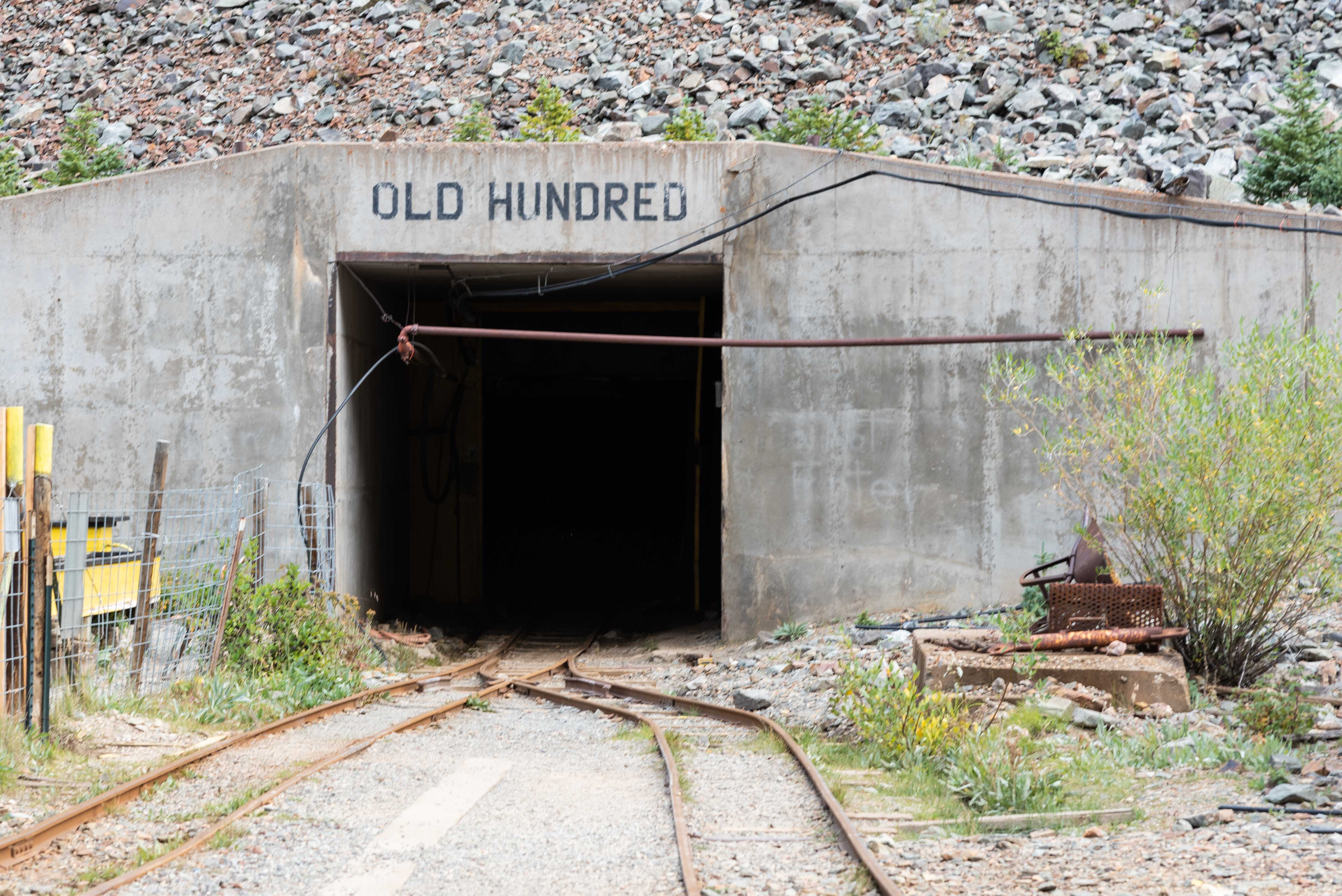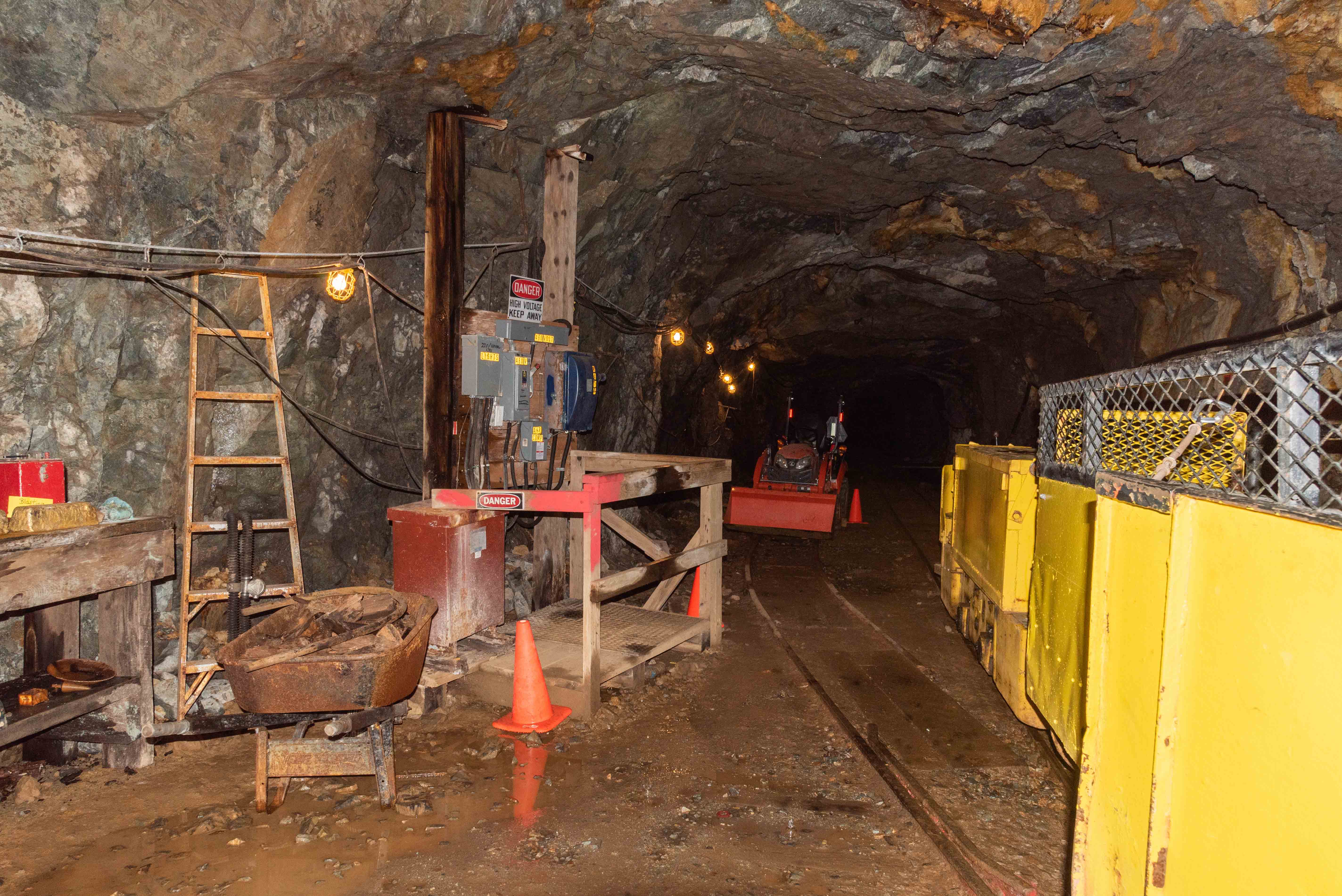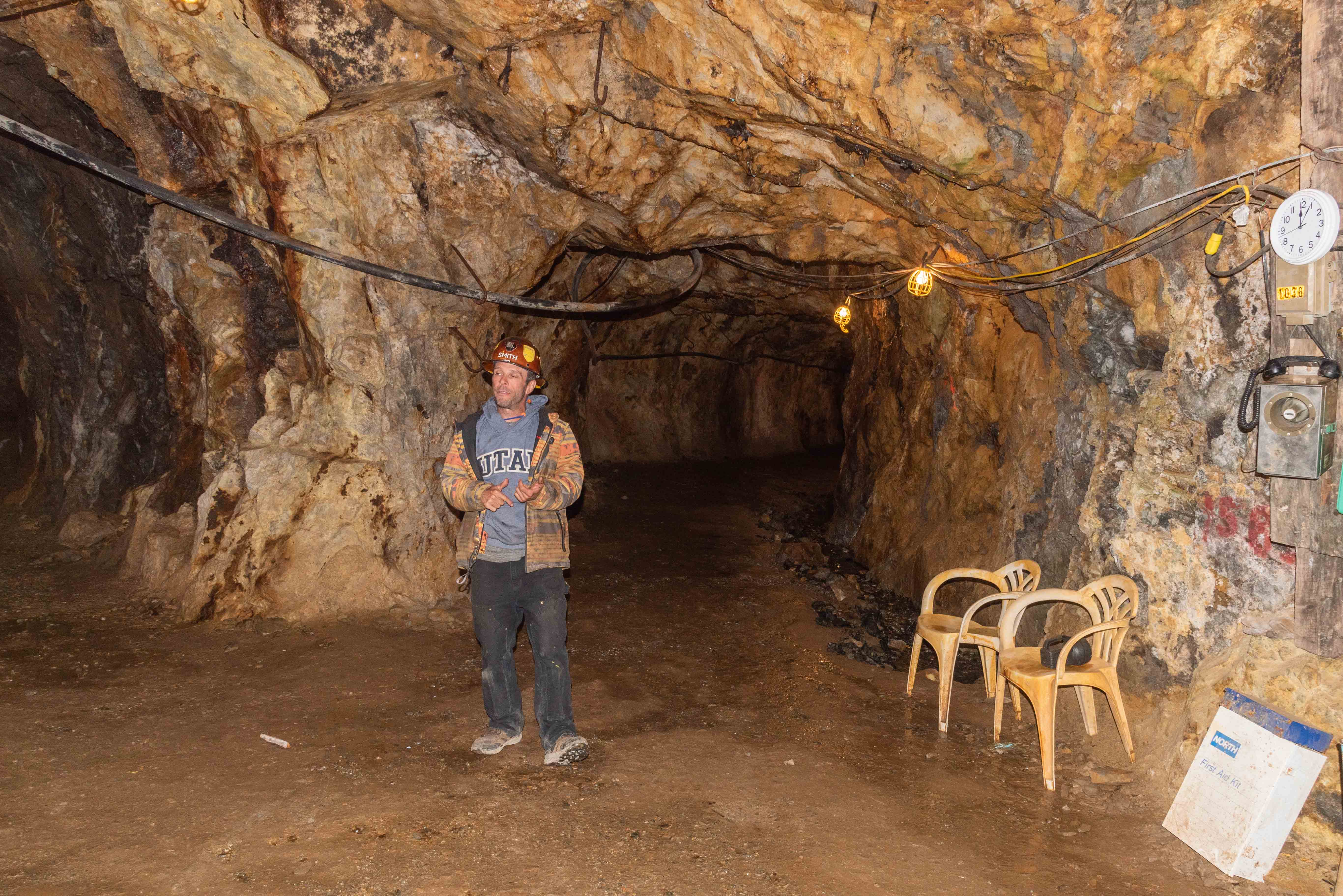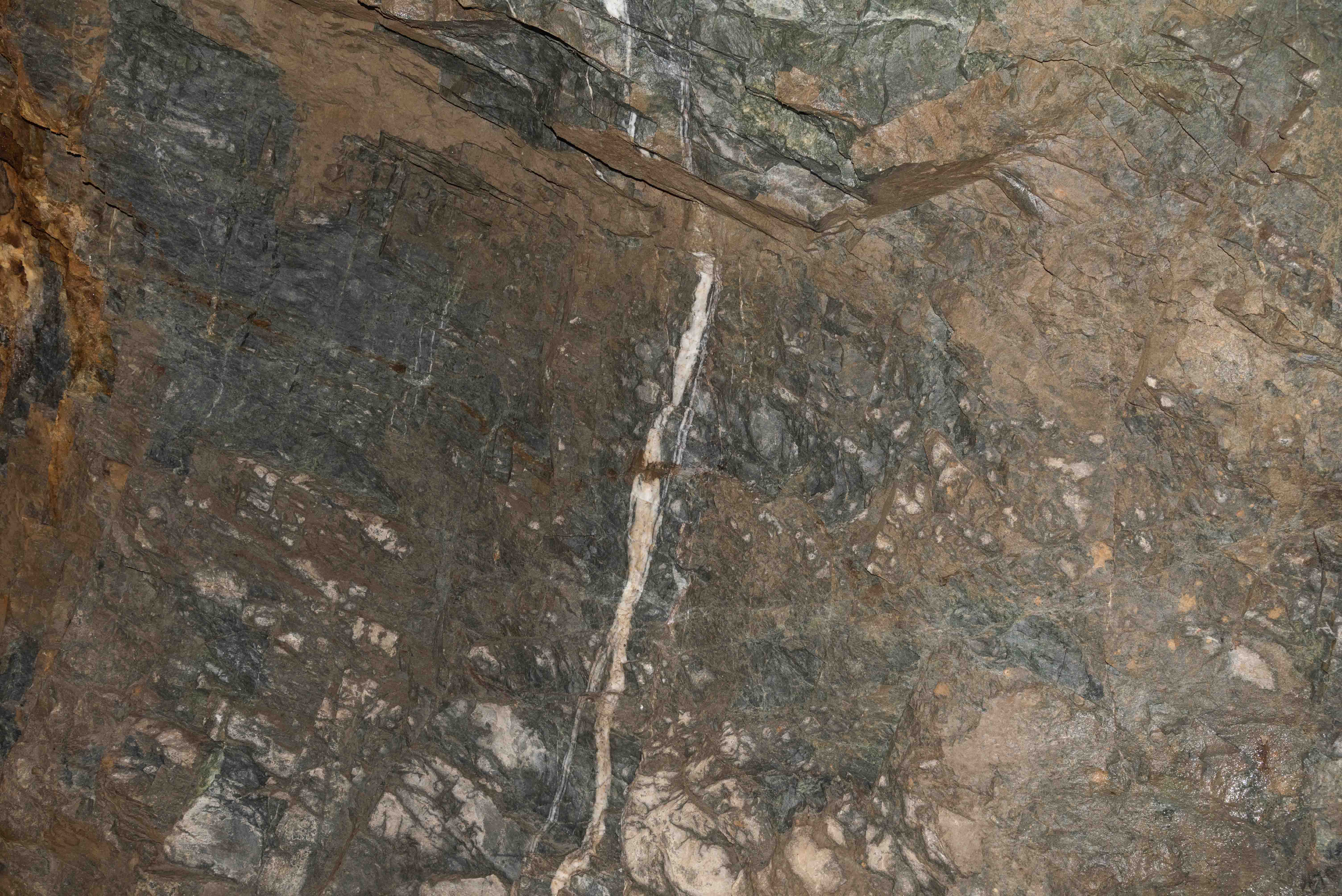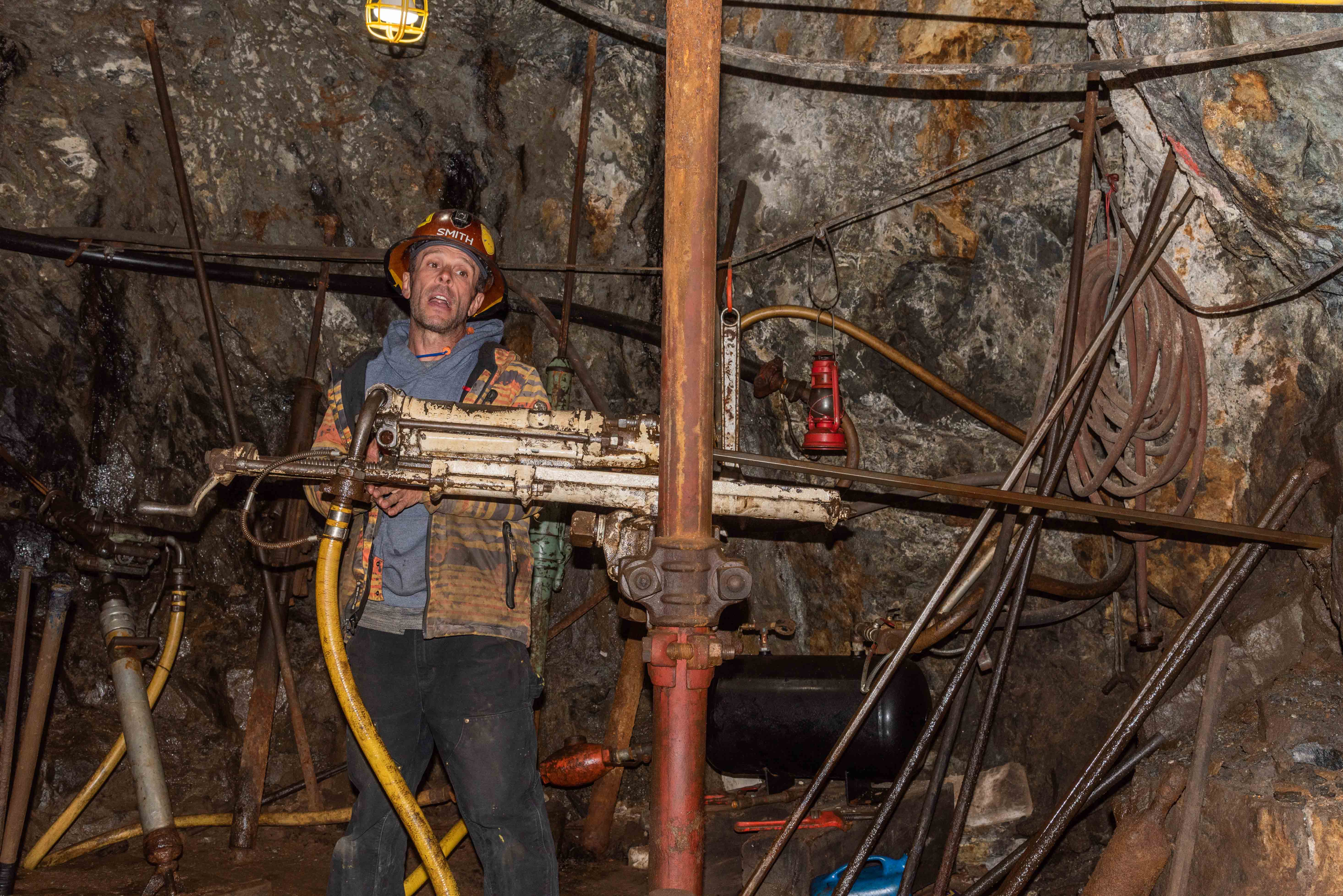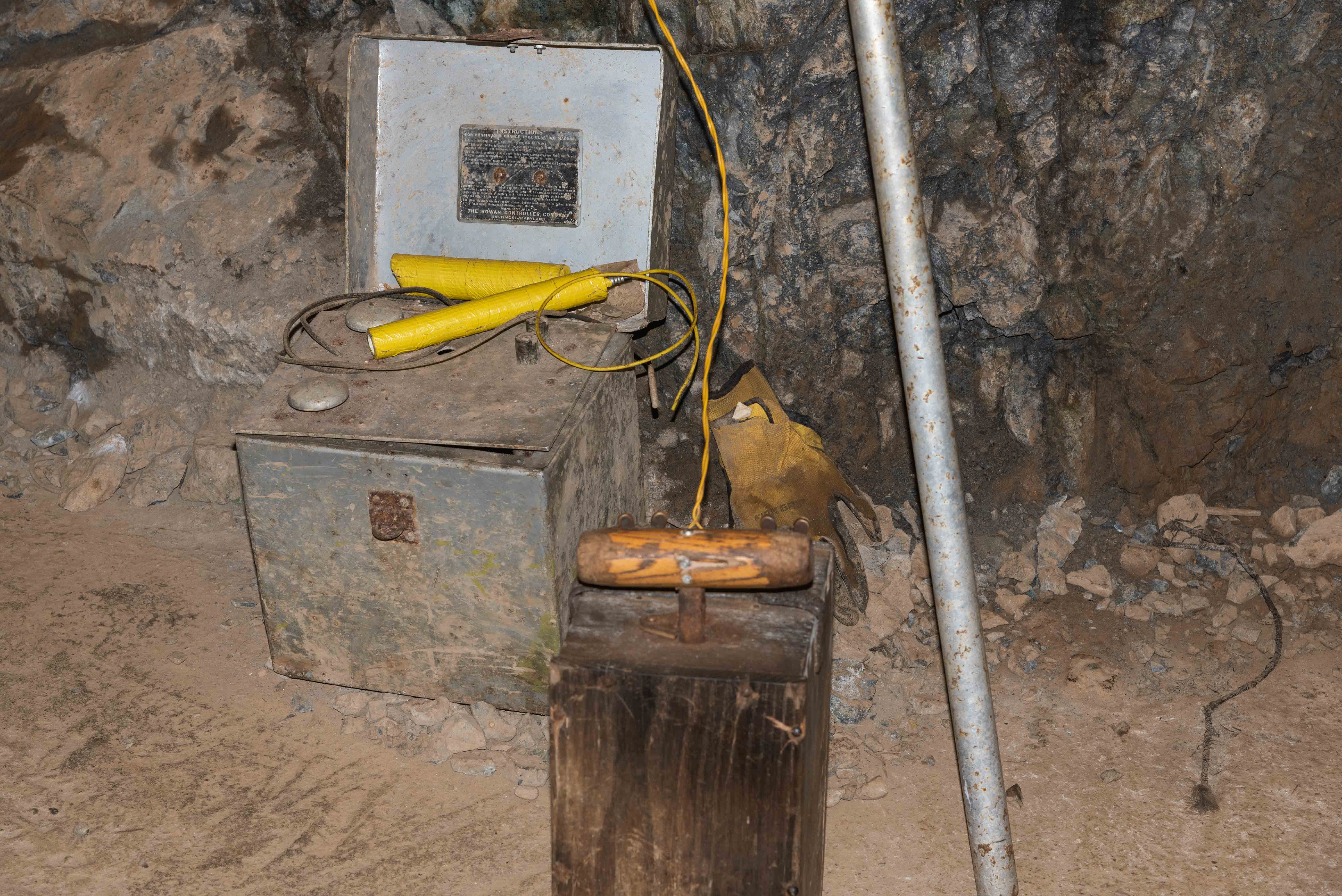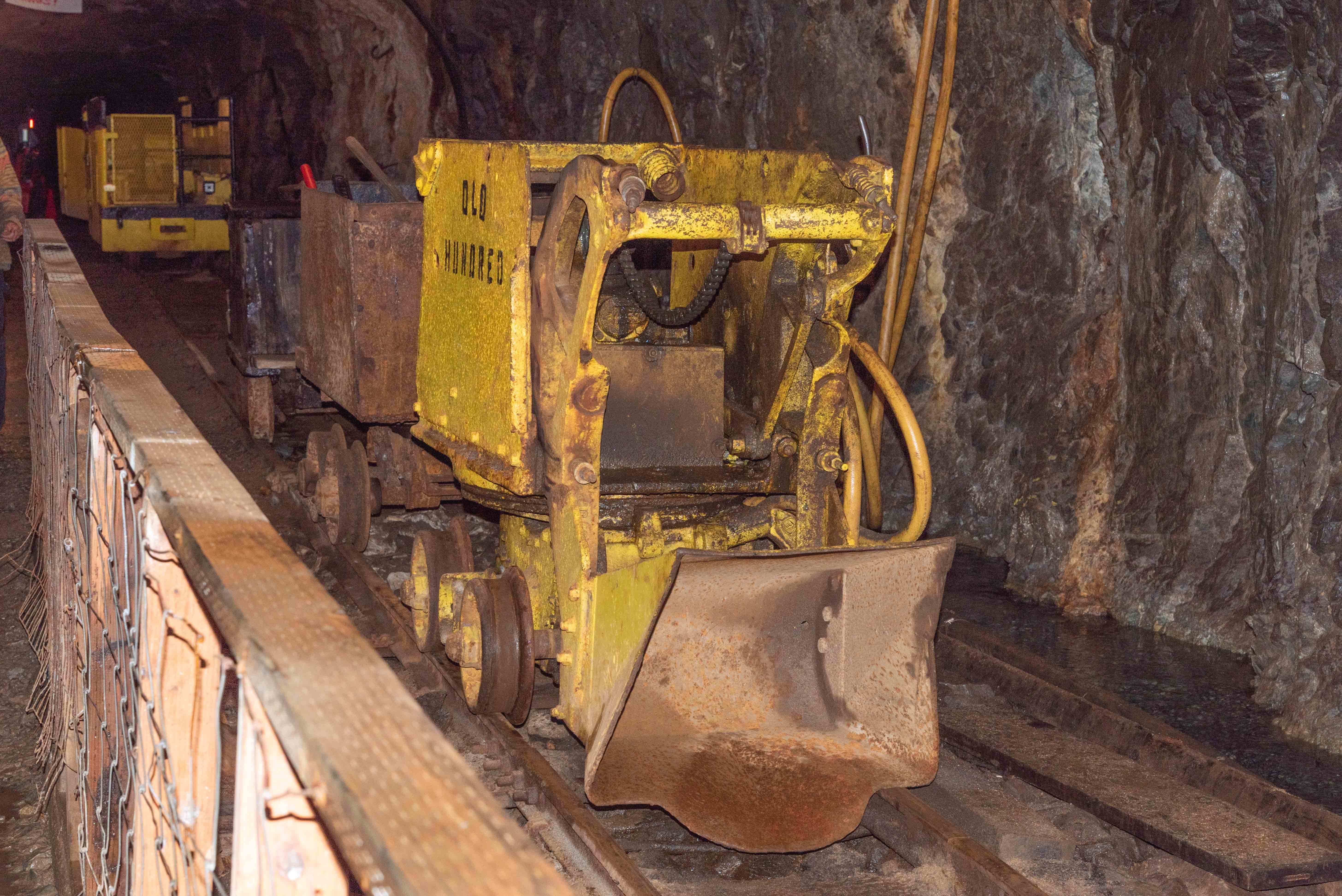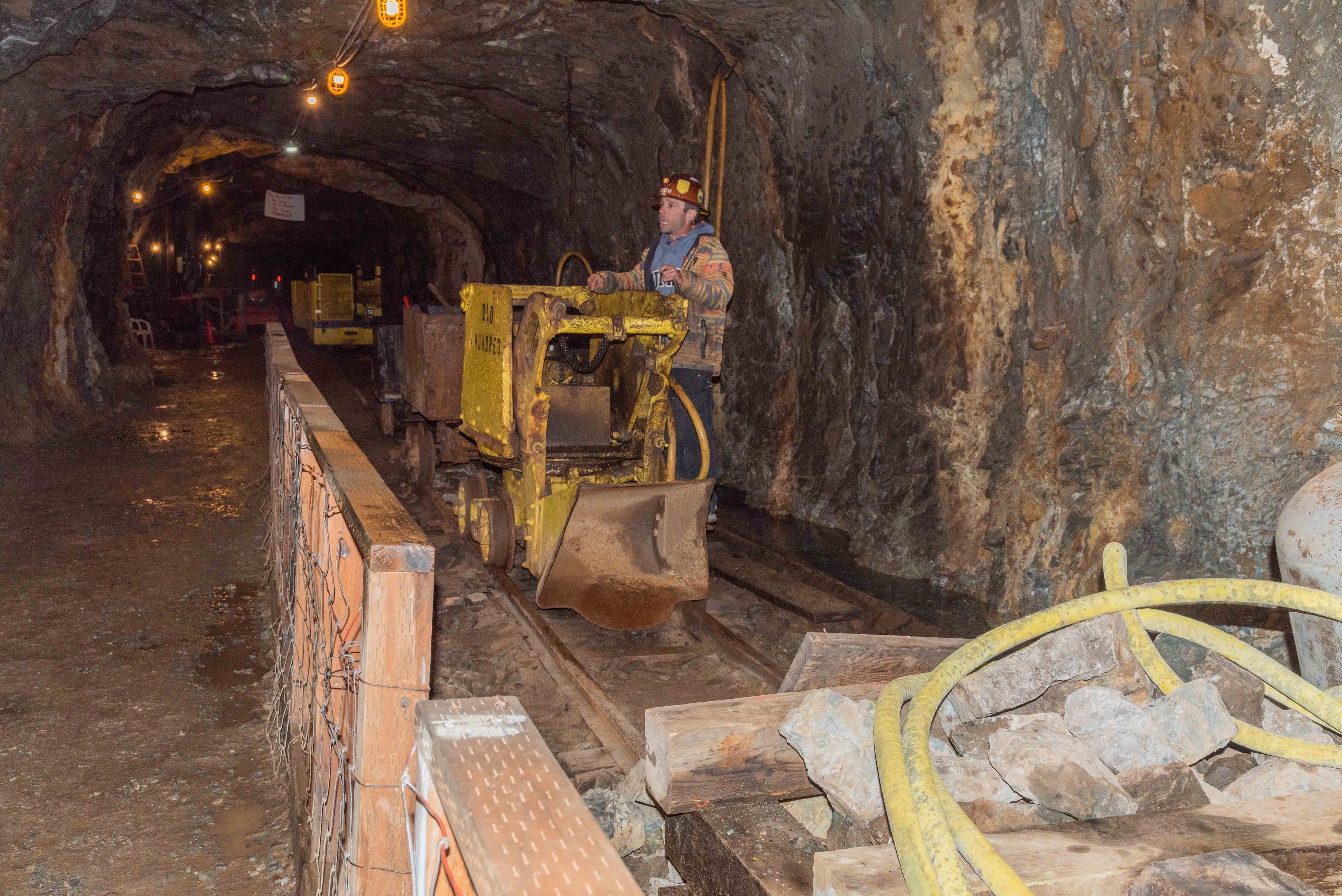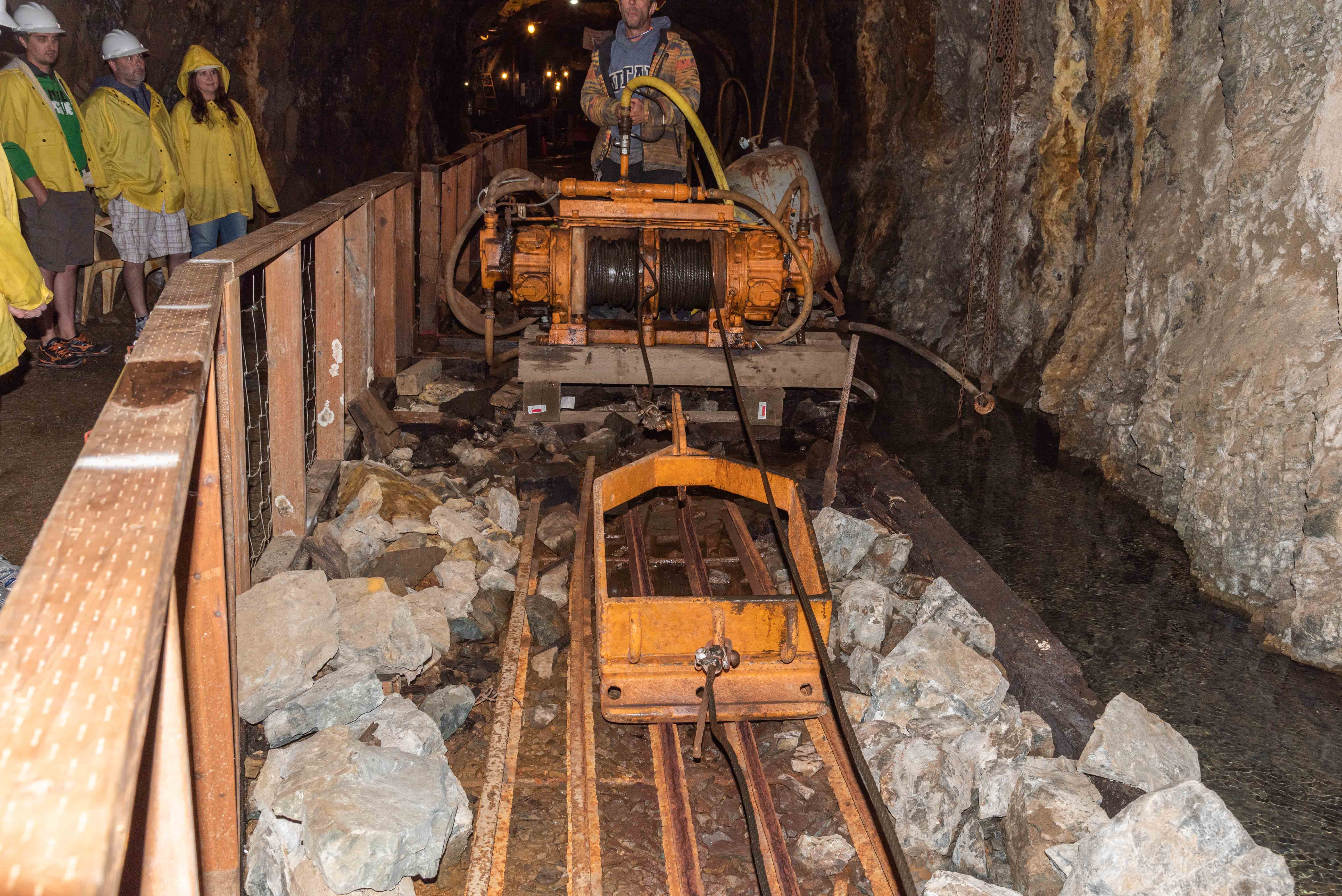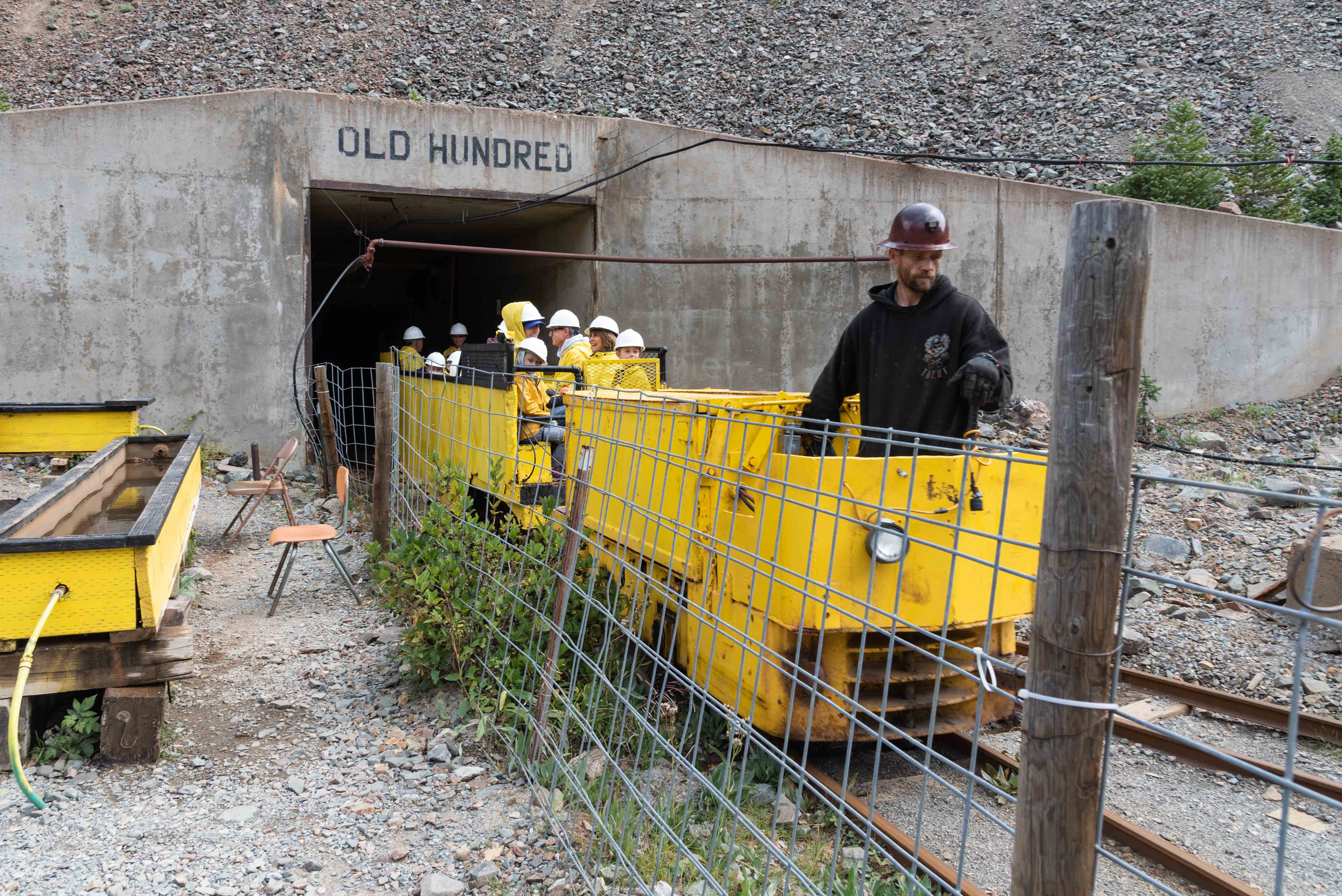Old Hundred Gold Mine Tour
The Neigold brothers located the "Old Hundred" mine in 1898. However, they could not raise enough capital
to develop it and sold the mine in 1904. The new owner, the Old Hundred Mining Company, drove new tunnels
and built a large boarding house. The company never made a profit, and by 1908 the the good gold ore was
mined out. The mine changed hands a couple of times over the ensuing years, and millions of dollars were
invested, but profitable ore was never found. Eventually, buildings were torn down and equipment sold
and nothing was left except the abandoned boarding house and miles of empty tunnels.
The Old Hundred is now a tourist attraction, offering guided tours of the mine. It's located north of
Silverton on County Road 4-A. The mine is open from late May through the end of September. Tours run every
hour on the hour from 10:00 or 11:00 AM to 3:00 or 4:00 PM. You can also try your luck at panning for
gold, silver, or semiprecious stones, and there's lots of neat old mining equipment in the mine yard.
Before buying a tour ticket take a look around the mine yard.
There are lots of cool things to look at. There is a mine cage used to lower people
and equipment into the mine and a display of water buckets that were used to haul
water out of the mine.
While waiting for the next tour to start
you can try your luck panning for gold or semiprecious stones in the
sluice boxes.
Everybody gets a raincoat and hard hat prior to boarding the
vintage electric mine train for the one-third mile ride into Galena Mountain. It's
47°F and very wet. Hope you brought warm clothes and got a good raincoat. Our
guide's name is Ken, and he'll be explaining the ins and outs of hard
rock mining during the tour.
Mine shafts and drifts (tunnels) have to be carved out of solid rock in order to get to the gold ore. Holes are drilled in the rock face, then dynamite inserted in the holes and fired, breaking up the rock a few feet at a time. Drilling was first done by hand using a hammer and drill steel (similar to a chisel). These were replaced by pneumatic drills powered by compressed air. The drills produced a lot of fine silica dust. Chronic inhalation of the dust caused silicosis or Miner's Consumption (Miner's Con) that was responsible for the deaths of scores of miners. This was mitigated by pumping water into the drill holes to suppress the dust.
Holes are drilled in the rock face in
a specific order, then dynamite is inserted into the holes and fired using fuses
or an electronic blaster.
After ore and waste rock has been blasted it must be removed and transported to the surface. The blasted rock is called "muck", and the process of removal is "mucking". Mucking can be done by hand or with the aid of mechanical devices. Muckers (humand or mechanical) shovel ore into carts. A mechanical mucker uses a front bucket to scoop up the muck and dump it into an ore cart. The ore carts are then moved on rails out of the mine where the ore is sorted and waste rock added to the mine "dump". Mine scrapers (slushers) are machines that pull the muck over an ore pass, which a vertical shaft through which the muck falls and is collected in the main level tunnel for transport to the surface.
We've come to the end of the tour. Take some time to wander around the mine yard, check out the scenery, or try your luck at panning for gold before heading back to Silverton.
Source material: Wkipedia, minetour.com
Use the form on the Home Page to submit comments, questions, or suggestions. TD Productions Copyright © 2021
